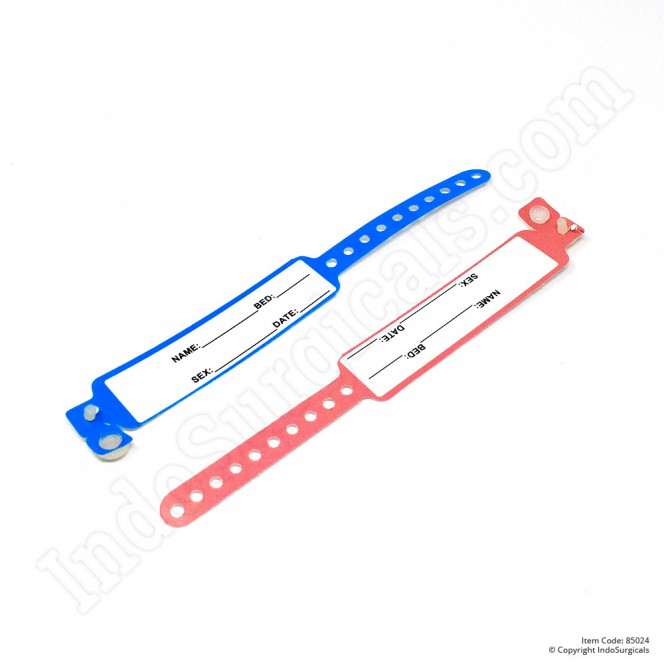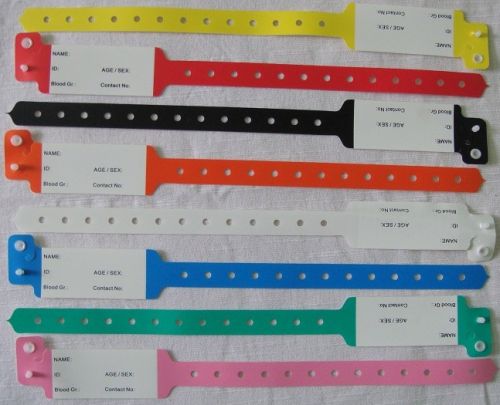The Role of a Patient Identification Band in Improving Hospital Patient Tracking Systems
Checking Out the Different Kinds Of Patient Identification Band Made Use Of in Clinical Facilities
In the elaborate globe of medical care, the vital duty of Patient Identification bands usually goes unnoticed. These bands, varying from easy paper wristbands to sophisticated RFID bands, develop the foundation of Patient security procedures, guaranteeing precision in Patient Identification.
Recognizing the Significance of Patient Identification Bands
While they may appear like plain devices, Patient Identification bands play an important function in clinical centers. These bands act as a crucial device for validating Patient identity, preventing medical mistakes associated with misidentification. The bands commonly show important info such as the Patient's name, age, blood group, and any kind of recognized allergic reactions. They enable health care specialists to quickly access this important details, therefore assisting in prompt and precise medical treatment. Patient Identification bands additionally aid in simplifying management tasks, guaranteeing accurate record-keeping and payment. Regardless of their simplicity, these bands embody the principle of Patient security, a foundation of quality healthcare. Without them, the threat of medical mistakes, and as a result, Patient damage, could significantly increase.
Standard Paper Wristbands: Their Use and Limitations
Typical paper wristbands have been a staple in Patient Identification across numerous clinical facilities. While their usage is prevalent, they nurture specific restrictions that may influence their effectiveness in Patient management. This section will certainly concentrate on the range of their application and the inherent disadvantages associated with their use.
Paper Wristbands: Use Range
In the world of Patient Identification, paper wristbands have long held an important duty. These bands are typically used in outpatient settings, where the Patient's keep is temporary. Despite advancements in innovation, the simple paper wristband continues to be a cost-efficient and reputable option for Patient Identification in numerous medical care situations.
Limitations of Paper Wristbands
Despite their widespread usage, paper wristbands are not without their downsides. In enhancement, paper wristbands typically do not have the technical capacities of even more contemporary alternatives, such as barcoding or RFID chips, restricting their performance to just presenting created information. Paper wristbands can create pain or skin inflammation to some patients, specifically when put on for extended durations.
Barcoded Wristbands: Advancements in Patient Identification
While Patient Identification has actually long been an important aspect of health care, the development of barcoded wristbands signifies a considerable leap forward. These bands take advantage of the simpleness of barcoding modern technology, enabling for Patient info to be promptly scanned and accessed. They enhance the speed and precision of Patient Identification, decreasing the threat of clinical mistakes related to misidentification.
Superhigh Frequency Identification (RFID) Bands: a Step In The Direction Of Futuristic Health Care
The advancement of Patient Identification bands has actually produced the introduction of Radio Regularity Identification (RFID) Bands (patient identification band). These cutting-edge gadgets existing read this post here vital advantages for medical care facilities, offering a much more reliable and technologically advanced ways of Patient Identification. The execution of RFID in healthcare is a considerable action in the direction of a much more futuristic method to Patient management and security
Understanding RFID Bands

RFID Bands: Trick Benefits
Mostly, these bands enhance Patient safety by giving exact, immediate Identification, thus lowering clinical errors. RFID bands can keep a large amount of Patient data, consisting of medical history and allergies, allowing personalized care. Generally, RFID bands represent a significant innovation in Patient Identification technology, profiting both patients and health care carriers.
Carrying Out RFID in Healthcare
These bands provide a smooth means to track and identify clients, guaranteeing their security and boosting performance in treatment procedures. RFID bands minimize clinical errors by offering precise Patient Identification, which is important in preventing misdiagnosis or wrong medicine management. Therefore, the execution of RFID bands is a significant step in the direction of enhancing Patient security and health care delivery.

Color-Coded Wristbands: Assisting in Quick and Accurate Medical Diagnosis
In the busy atmosphere of a clinical facility, color-coded wristbands have emerged as important devices for swift and precise Identification of a client's medical condition. These wristbands, used by clients, carry specific colors that match to various medical problems or standings. This system is developed to use instant visual signs to health care carriers, boosting Patient security and care high quality.
Techniques for Effective Execution and Monitoring of Patient ID Bands
Accomplishing ideal usage of Patient Identification bands requires a well-structured method for their application and administration. Patient education and learning is likewise essential; patients have to recognize the function of the bands and the demand for visite site their constant wear. It's important to have a backup strategy in location, such as barcode scanning or biometrics, to make sure that Patient Identification is never ever jeopardized.
Final thought
Patient Identification bands are crucial in medical centers to ensure security and precision. Conventional paper, barcoded, RFID, and color-coded wristbands each hold one-of-a-kind benefits, ranging from cost-effectiveness to innovative information storage space and instantaneous clinical informs. Reliable application and monitoring of these bands can significantly minimize clinical errors, improve performance, and enhance total Patient treatment. Hence, understanding and making use of these Identification devices is critical for maintaining high criteria in health care.
These bands, differing from straightforward paper wristbands to advanced RFID bands, create the backbone of Patient security procedures, guaranteeing accuracy in Patient Identification.The development of Patient Identification bands has actually brought concerning the appearance of Radio Regularity Identification (RFID) Bands. Overall, RFID bands represent a significant development in Patient Identification technology, profiting both individuals and healthcare companies.
RFID bands reduce clinical errors by providing exact Patient Identification, which is vital in protecting against misdiagnosis or wrong medicine administration. Patient education is also essential; individuals have to recognize the purpose of the bands and the need for their continuous wear.